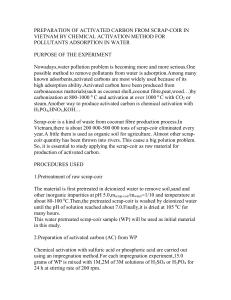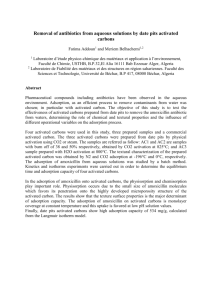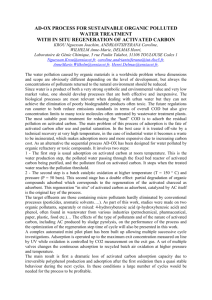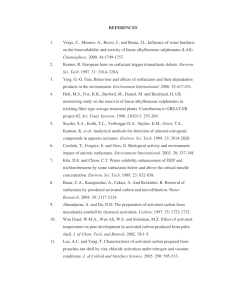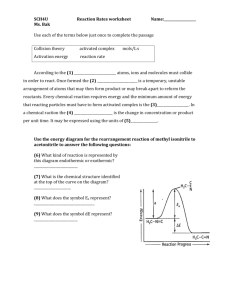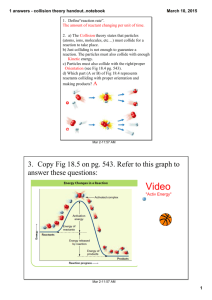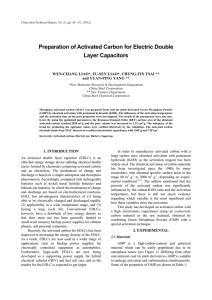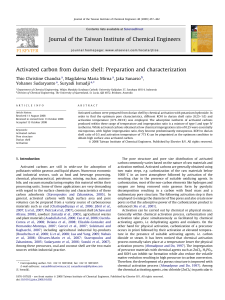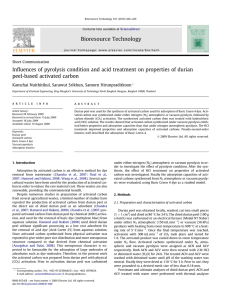Removal of naproxen sodium from solution by activated carbon
advertisement
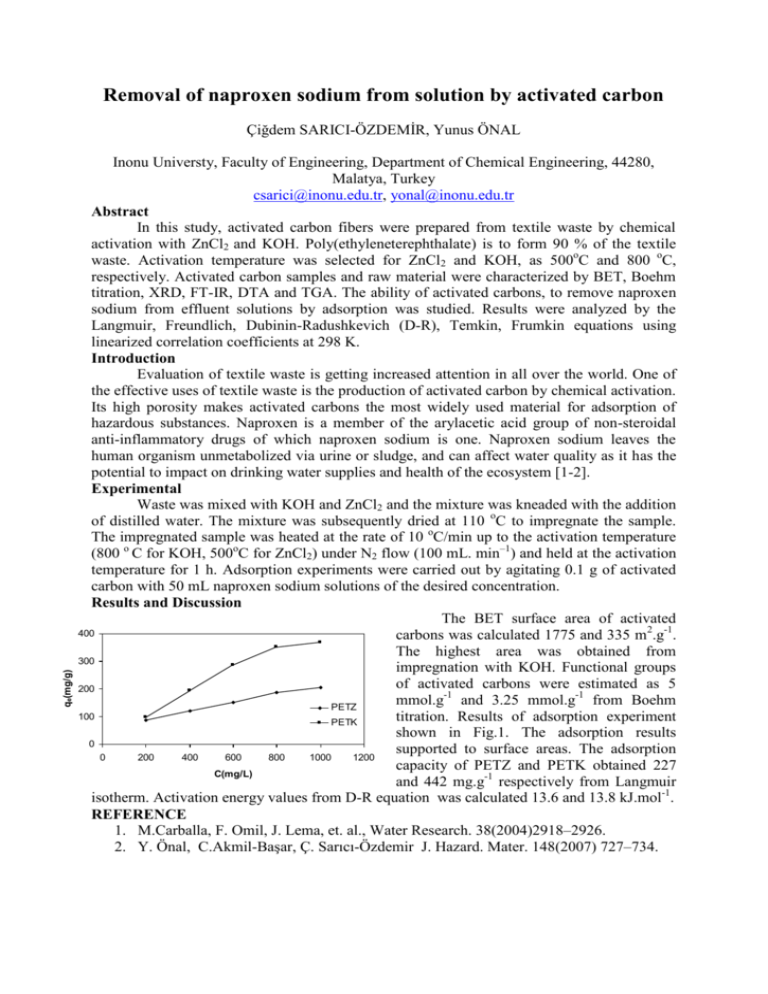
Removal of naproxen sodium from solution by activated carbon qe(mg/g) Çiğdem SARICI-ÖZDEMİR, Yunus ÖNAL Inonu Universty, Faculty of Engineering, Department of Chemical Engineering, 44280, Malatya, Turkey csarici@inonu.edu.tr, yonal@inonu.edu.tr Abstract In this study, activated carbon fibers were prepared from textile waste by chemical activation with ZnCl2 and KOH. Poly(ethyleneterephthalate) is to form 90 % of the textile waste. Activation temperature was selected for ZnCl2 and KOH, as 500oC and 800 oC, respectively. Activated carbon samples and raw material were characterized by BET, Boehm titration, XRD, FT-IR, DTA and TGA. The ability of activated carbons, to remove naproxen sodium from effluent solutions by adsorption was studied. Results were analyzed by the Langmuir, Freundlich, Dubinin-Radushkevich (D-R), Temkin, Frumkin equations using linearized correlation coefficients at 298 K. Introduction Evaluation of textile waste is getting increased attention in all over the world. One of the effective uses of textile waste is the production of activated carbon by chemical activation. Its high porosity makes activated carbons the most widely used material for adsorption of hazardous substances. Naproxen is a member of the arylacetic acid group of non-steroidal anti-inflammatory drugs of which naproxen sodium is one. Naproxen sodium leaves the human organism unmetabolized via urine or sludge, and can affect water quality as it has the potential to impact on drinking water supplies and health of the ecosystem [1-2]. Experimental Waste was mixed with KOH and ZnCl2 and the mixture was kneaded with the addition of distilled water. The mixture was subsequently dried at 110 oC to impregnate the sample. The impregnated sample was heated at the rate of 10 oC/min up to the activation temperature (800 o C for KOH, 500oC for ZnCl2) under N2 flow (100 mL. min–1) and held at the activation temperature for 1 h. Adsorption experiments were carried out by agitating 0.1 g of activated carbon with 50 mL naproxen sodium solutions of the desired concentration. Results and Discussion The BET surface area of activated 400 carbons was calculated 1775 and 335 m2.g-1. The highest area was obtained from 300 impregnation with KOH. Functional groups of activated carbons were estimated as 5 200 mmol.g-1 and 3.25 mmol.g-1 from Boehm PETZ 100 titration. Results of adsorption experiment PETK shown in Fig.1. The adsorption results 0 supported to surface areas. The adsorption 0 200 400 600 800 1000 1200 capacity of PETZ and PETK obtained 227 C(mg/L) and 442 mg.g-1 respectively from Langmuir isotherm. Activation energy values from D-R equation was calculated 13.6 and 13.8 kJ.mol-1. REFERENCE 1. M.Carballa, F. Omil, J. Lema, et. al., Water Research. 38(2004)2918–2926. 2. Y. Önal, C.Akmil-Başar, Ç. Sarıcı-Özdemir J. Hazard. Mater. 148(2007) 727–734.
